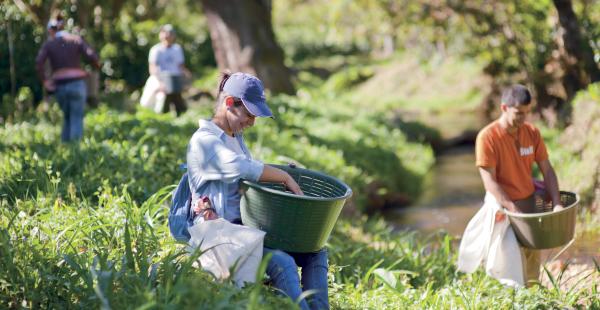
Coffee NAMA transforms Costa Rican coffee production
After four years of implementation, 22 percent of Costa Rica’s coffee production is low-carbon and sustainable. This success has become possible through the application of good agricultural practices and technology changes within the worldwide first Nationally Appropriate Mitigation Action in agriculture.
Coffee is one of Costa Rica’s most important and emblematic export good and deeply connected to the country’s national identity. However, climate change clearly challenges the livelihood of Costa Rican coffee farmers and the crop’s long-term sustainability.
Faced with this dire situation, in 2014 the sector joined forces with public institutions and the international cooperation to implement the Nationally Appropriate Mitigation Action (NAMA) Café. The NAMA Café is implemented by the country’s Ministry of Environment and Energy (MINAE), Ministry of Agriculture and Livestock (MAG) and National Coffee Institute (ICAFE) until 2024 and aims to reduce GHG emissions during coffee production and processing as well as adapt to the impact of climate change.
“When we started with this initiative, many coffee producers had no idea of the impact their crop had on climate change and vice versa – and even less of what to do about it”, expressed Renato Alvarado, minister of Agriculture. Five years later, 22% of Costa Rican coffee is produced in a sustainable manner and emitting the least possible amount of greenhouse gas (GHG) emissions.
Over 8.900 producers on 25.000 hectares (22% of national production) were trained in applying good agricultural practices in order to adapt to changing climate conditions, minimize the impact of illnesses and pests, and maintain their crop’s productivity.
Jointly with the Fundación Banco Ambiental (FUNBAM), over 75.000 shade trees were planted in over 80 coffee plantations, contributing to the capture of carbon dioxide, adaptation to climate change and protection of biodiversity.
62 Costa Rican coffee mills (24% of those officially registered) were accompanied in the annual measurement of their GHG inventories by way of capacity building and technical assistance in order to reduce GHG emissions, water and energy consumption.
To facilitate necessary investments and acquisition of equipment, a credit line of US$8 million was launched in cooperation with the Central American Bank for Economic Integration (CABEI). Additionally, over US$3.8 million have been mobilized in private funds.
In order to successfully position the worldwide first low-carbon coffee on international markets and exploit its added value, 21 commercial managers improved their marketing and sales skills; 15 have managed to position their coffee on German and U.S. markets. Additionally, ICAFE included the NAMA Café as one of eight pillars of its Traceability and Sustainability Statement which aims to inform buyers and consumers in a transparent manner on every detail of the production and processing of Costa Rican coffee.
The project has reduced 38.000 tons CO2e in coffee production and processing.
The NAMA Café received technical and financial support from 2015 to 2019 through the NAMA Support Project Low Carbon Coffee Costa Rica, implemented by the German Development Cooperation GIZ on behalf of the NAMA Facility.
In early 2019, Costa Rica launched an ambitious plan towards complete decarbonization of its economy until 2050, focusing on 10 main axes, including agriculture. Possible future actions could include additional NAMAs in other crops, such as rice and banana.
For more information: www.namacafe.org

